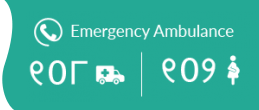


MAJOR EQUIPMENT AVALIABLE IN THE DEPARTMENT:
- Mwokambika basic Dental chair with, compact chair
- One ordinary dental chair
- Micromotor with straight hand piece,
- Autoclave-1
- Suction apparatus –1
- Cautery-1
- Dental drill-1
- Sterilizer electrical-1
- BP instrument-1
- Minor Surgical Equipments
OPERATION THEATRE UNIT:
- Operation theatres – 1
- Equipment: (along with anesthesia equipment)
- Piped O2 and N2O system, Boyle’s apparatus with O2 & N2O cylinder-15, M.P. Monitor-18, S.P. Monitor, Oxymeter-13, OT light, OT table, Capnometer-4, Cardiomonitor-2, Difibrilator-2, Ventilator-6, Anaesthesia Workstation -2, BP instruments-5, Suction machine-20
- Facilities available in each O.T. unit – Waiting room for patients, soiled linen room, sterilization room, nurses duty room, surgeons & anesthetists room, washing room for surgeons & assistant, students washing up and dressing up room are available
- Arrangement of Anesthesia – Pre and post-anaesthetic care is provided. Nature of anesthesia used: LA. Pre-operative ward has 110 and Post-operative ward has 06 beds. Resuscitation facilities and special equipment are available.
TEACHING PROGRAMME:
Curriculum of studies – as prescribed by MCI
Methodology:
- Clinical postings – monthly in groups of 25 on rotation basis for 15 days
- Didactic Lectures – As per routine prepared by the Dean and Principal
- Demonstrations – 15/year, Tutorials – 10, Seminars – 28/year
- Practicals – duration of operation theatre postings: daily/weekly
- Bedside Clinics- daily as per the distribution given by the Principal
- Student spend 3hrs/day (9am-12noon) at the wards for clerkship
- Average Number of students posted at a time for indoor postings – 25
- Students write case histories in a prescribed book that are periodically corrected by the allotted teacher. During inpatients ward posting training to the students is given by assistant professors. Other teaching/ training activities – conferences, guest lectures, workshops, CME. Integrated teaching like clinico-pathological discussion with pathology, interdepartmental discussion of interesting cases are done regularly





